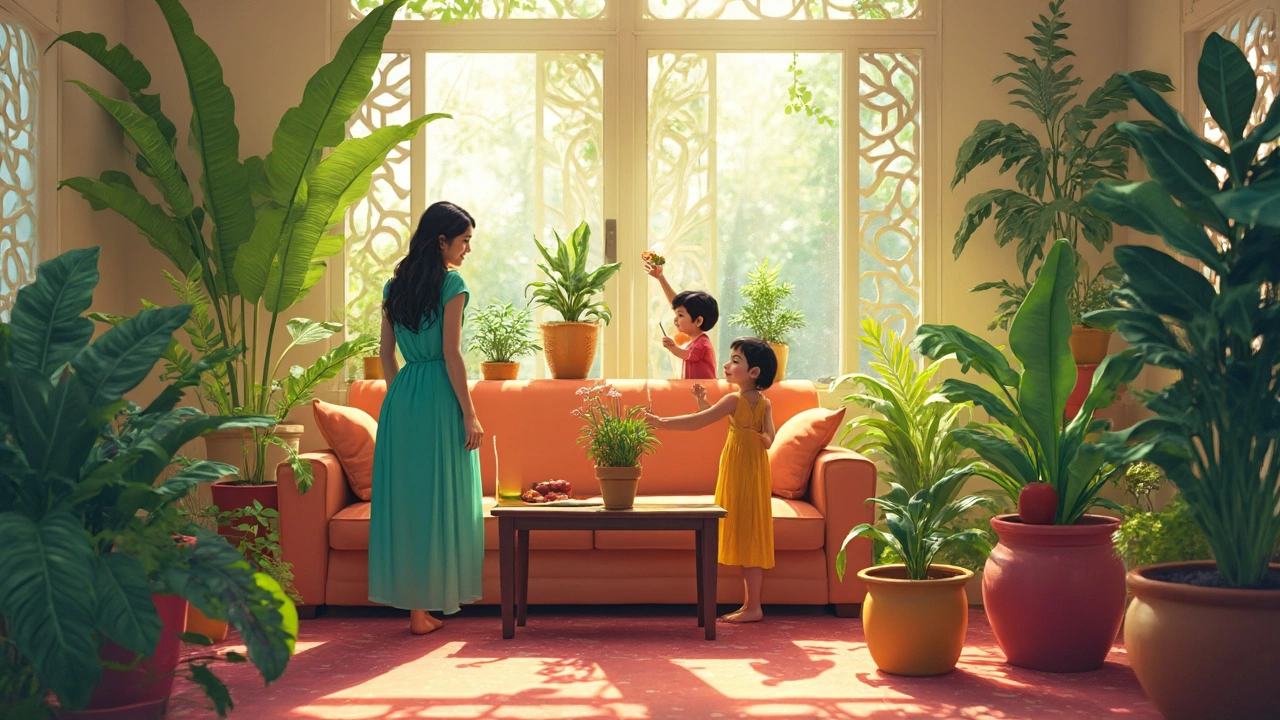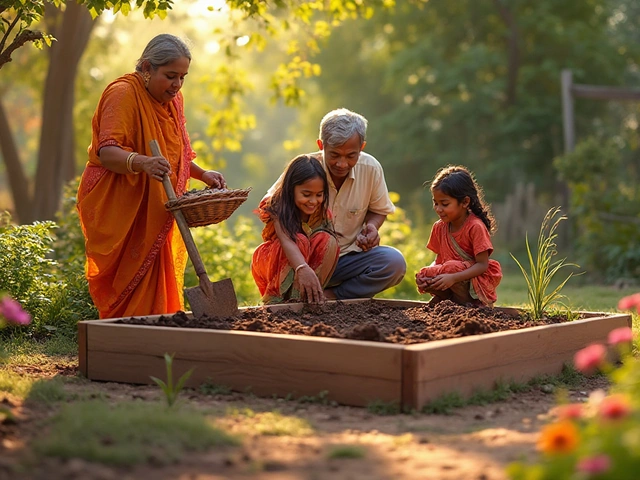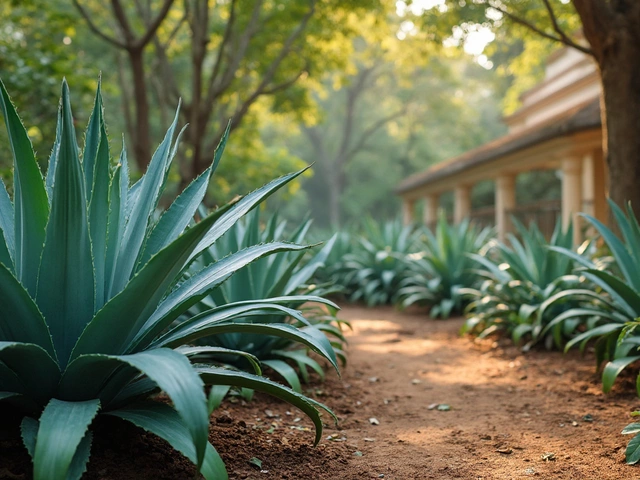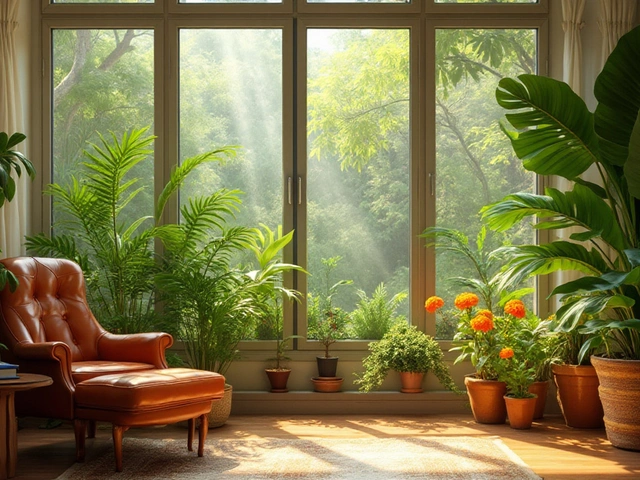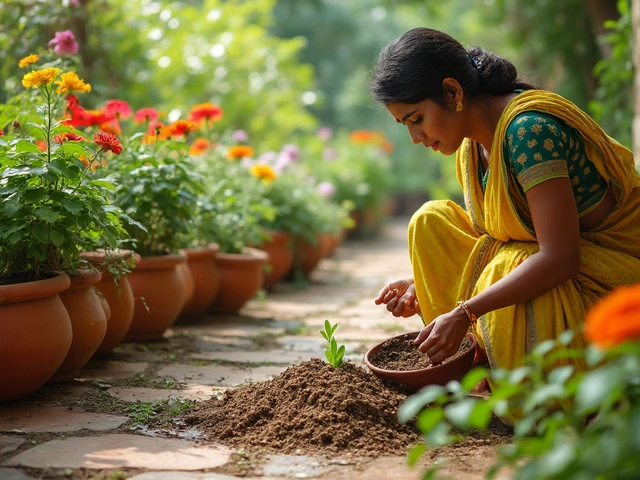You might've heard that filling your living room with plants turns your place into a mini rainforest that scrubs your air clean. That sounds great, but is it actually true, or is it just Instagram hype?
If you’re just grabbing a peace lily or two from the local supermarket and expecting your allergies to get better overnight, you might be waiting a long time. It turns out, the relationship between plants and air purity isn’t as simple as some people think.
Let’s dig into what really happens when you bring houseplants inside. Are they actually taking nasty stuff out of the air, or do they just look nice and give you a mood boost? This isn't just about ferns and snake plants—it's about what works, what’s proven, and what just makes us feel good. Plus, if you want your plants to help out as much as possible, there are simple tricks you can use to level up their benefits.
- The Myth: Do Plants Really Clean Air?
- What Scientific Studies Actually Say
- Best Plants for Indoor Air (And Why)
- How Many Plants Does It Take?
- Other Ways to Improve Indoor Air
- Care Tips: Keeping Indoor Plants Healthy
The Myth: Do Plants Really Clean Air?
Everywhere you look online, someone’s hyping up a plant as a magic air-freshener. The idea goes way back—people claim houseplants can pull chemicals like formaldehyde, benzene, and even mold spores right out of the air you breathe at home. Some even say you can skip the air purifier and just get more pots. Sounds awesome, right?
This whole idea really exploded after a NASA study in 1989. Their research showed some common plants could help remove certain toxins in a controlled, closed-off space. Here’s the kicker though: NASA squeezed houseplants into sealed glass chambers, pumped in chemicals, and measured how much disappeared. That situation doesn’t match the typical living room, not even close. In a regular home, air flows in and out, and pollutants come from all kinds of sources—cooking, cleaning, furniture, even what you bring in from outside.
| Source | Environment | Test Results |
|---|---|---|
| NASA (1989) | Sealed glass chamber | Plants removed tiny amounts of volatile chemicals |
| Real homes (recent studies) | Rooms with normal air flow | Little to no meaningful drop in pollutant levels from plants |
Don’t get me wrong, indoor plants do absorb some pollutants. It’s just that, in real-world spaces, the actual effect is tiny—nowhere near what the internet promises. According to more recent studies, you’d need an entire jungle (think 100+ good-sized plants) just to make a small difference in a typical living room or office.
This doesn’t mean keeping plants is pointless. They can boost your mood, ease stress, and add some life to your space. But if you want truly cleaner air, you’ll need proper ventilation, maybe a HEPA filter, and regular cleaning—plants alone won’t do the trick.
What Scientific Studies Actually Say
If you look online, you’ll see all kinds of bold claims about indoor plants sucking up chemicals and freshening your air. Most of these claims trace back to a NASA study from the late 1980s. In that research, scientists tested some common houseplants and found they could pull certain chemicals, like formaldehyde and benzene, out of the air. Sounds amazing, right? Well, there’s a big catch.
The experiments were done in super-controlled lab chambers. The air space was tiny, way smaller than your average living room or office. In real-world homes, the effects aren’t nearly as dramatic. A 2019 study in the Journal of Exposure Science & Environmental Epidemiology found that you’d need somewhere between 100 and 1,000 plants per square meter of floor space to match the air-cleaning power of a basic vent fan. Unless you’re living in a greenhouse, that’s just not practical.
Here’s a quick look at what science really shows about houseplants and air purification:
| Study/Source | Finding |
|---|---|
| NASA (1989) | Certain plants removed VOCs in sealed chambers |
| Wolverton (1993) | Some improvement, but only in small containers |
| Cummings & Waring (2019) | You’d need hundreds of plants per room for any real effect |
| US EPA (2022) | Ventilation is far more effective than plants for clean air |
Plants do some air filtering through their leaves and roots, but homes have air moving in, out, and around all day. That means chemicals and dust just don’t stick around long enough for plants to do much.
The bottom line? If you like plants, keep them for the vibe, the pops of color, and maybe a mild bump in humidity. But for real air cleaning, science says you need airflow—open windows, good vents, or an air purifier will do way more. So, don’t rip up your monstera, but don’t expect it to act like a high-powered filter either.
Best Plants for Indoor Air (And Why)
If you search for the best plants to clean your air, you’ll see a lot of the same names pop up. Most of these came from a NASA study in 1989, where scientists tried to figure out if houseplants could pull common chemicals like benzene and formaldehyde from the air in a sealed lab chamber. Just keep in mind—what worked in a lab doesn't always work as well in your living room. But some plants are better than others at handling these jobs, so let’s talk about the ones worth a spot on your windowsill.
- Snake Plant (Sansevieria): Tolerates neglect, literally thrives on being left alone. It’s good at absorbing toxins, especially formaldehyde and nitrogen oxides. If you travel a lot, this guy is low drama.
- Spider Plant (Chlorophytum comosum): Super easy to grow and great at removing chemicals like carbon monoxide and xylene. It even sends out pups, so you get bonus plants for free.
- Peace Lily (Spathiphyllum): Known for taking out ammonia, benzene, and formaldehyde. Bonus—its flowers look great. But keep it away from pets, as it can be toxic if chewed.
- Pothos (Epipremnum aureum): If you want something that grows fast, pothos is tough to beat. It handles low light and is good for mopping up benzene and formaldehyde.
- Areca Palm (Dypsis lutescens): Looks cool in corners and does pretty well with indoor pollutants, especially toluene and xylene. It also pumps out a fair amount of humidity.
Here’s a quick rundown of what these plants can potentially do, based on actual lab studies:
| Plant Name | Main Air Pollutants Removed (Lab conditions) | Easy to Grow? |
|---|---|---|
| Snake Plant | Formaldehyde, Nitrogen Oxides | Yes |
| Spider Plant | Carbon Monoxide, Xylene | Yes |
| Peace Lily | Benzene, Ammonia, Formaldehyde | Moderate |
| Pothos | Benzene, Formaldehyde | Yes |
| Areca Palm | Toluene, Xylene | Moderate |
The big takeaway? If you want an easy-care option, go for snake plant or pothos. If you’ve got a bit of a green thumb and want some flowers, peace lily is a winner. But don’t let anyone sell you one “miracle” plant—it takes a bunch of plants working together, not just one standing in a corner, to make a difference. And remember, pets matter: check before buying if your plants are safe for the fur balls at home.

How Many Plants Does It Take?
If you’re hoping your new indoor jungle will make a real difference in air purification, you need to know how many plants actually get the job done. Here’s where the reality check comes in: the often-cited NASA study from the 1980s suggested that some houseplants can remove toxins like benzene, formaldehyde, and trichloroethylene from the air. But that experiment happened in a small, sealed chamber—nothing like your living room or apartment.
Some researchers tried to figure out how that would work in a typical home. The answer? You’d basically need dozens of plants in each room. The University of Birmingham and the Royal Horticultural Society did a study and found that a regular houseplant removed so little pollution that you’d need somewhere between 100 to 1,000 plants per square meter to make any real difference.
| Room Size | Plants Needed for Noticeable Effect |
|---|---|
| Small Bedroom (10 m²) | 100-1,000 |
| Living Room (20 m²) | 200-2,000 |
| Office (50 m²) | 500-5,000 |
Yeah, that’s a lot of plants—way more than anyone would actually squeeze into a room without turning it into a forest (and maybe a bug hotel). So for most people, a few plants here and there aren’t going to overhaul your indoor air quality.
Still, having several easy-care houseplants in different corners of your home can add a small boost, especially if you keep them healthy and dust-free. Some folks use an old rule of thumb: aim for at least one plant every 10 square feet if you’re keen to maximize whatever benefit you can get. If you’re serious about cleaner air, though, it probably makes more sense to focus on good ventilation and air purifiers. Plants are nice for lots of reasons—they just aren’t magic dust-busters in real-world rooms.
Other Ways to Improve Indoor Air
So, even if your plant jungle isn’t scrubbing toxins left and right, you’ve still got solid options to step up your indoor air game. Relying on plants alone won’t cut it if you’re worried about air quality, especially with modern homes being so sealed up. Here’s what really works for healthier air inside.
- Regular Ventilation: The #1 way to clear out stuffy, polluted air is to open those windows. Just 10-15 minutes of fresh air a day can make a real difference, especially after cooking, cleaning, or using aerosols.
- Use an Air Purifier: These machines actually do what most people wish plants could—filtering out dust, pollen, pet dander, and even tiny particles like smoke. Look for a HEPA filter (that’s the type experts recommend).
- Keep Clean: Dust, vacuum, and mop regularly. Dust holds onto all kinds of stuff, from dead skin to chemical residues, so keeping surfaces clean really helps.
- Cut Down on Indoor Pollution: Watch out for things like scented candles, air fresheners, and harsh cleaning sprays. These release chemicals you don’t want to keep breathing in, especially in closed spaces.
- Control Humidity: Mold loves moist air. Using a dehumidifier or just running a bathroom fan during showers helps keep things in check. Try to aim for 30-50% humidity inside.
- Mind the HVAC: If you’ve got central air or heating, pop in a new filter every couple of months. It helps trap dust and allergens before they spread around the whole place.
If your goal is cleaner air, stacking a few of these strategies makes a bigger impact than leaning on plants alone. Plants definitely make your space feel better, but these steps actually help you breathe easier.
Care Tips: Keeping Indoor Plants Healthy
Healthy plants aren’t just about looks—they’re your best bet if you want them to actually do something for your indoor air. Sick, droopy leaves don’t help anyone. So, what does it take to keep those indoor plants thriving?
First, figure out how much light your plant needs. Most houseplants don’t enjoy blazing sun—think gentle, filtered light. Put snake plants or pothos in low light, but give that fiddle leaf fig a bright, indirect spot near a window. If leaves look crispy or bleached, it’s probably too much sun.
Watering is a classic trip-up. Most people kill their plants with kindness (aka, too much water). Stick your finger in the soil; if the top inch is dry, water. If not, leave it alone. Plants like succulents want way less water than something like a peace lily.
- Use pots with drainage holes. Sitting in water is a fast track to root rot.
- Wipe off dusty leaves every couple of weeks so your plants can "breathe." A dusty leaf blocks sunlight and slows growth.
- Check for bugs like spider mites and aphids. If you see tiny webs or sticky spots, rinse the leaves and try a mild soapy spray.
Feeding makes a difference, too. Houseplants aren’t heavy eaters, but a balanced liquid fertilizer every month in spring and summer can keep them looking sharp. Cut back in fall and winter when plants chill out.
If you’re repotting, size up just one pot size at a time. Overly huge pots hold too much water and lead to soggy roots. Use fresh, light potting mix instead of dense garden soil. You want those roots to get air, not suffocate.
Finally, remember this: healthy plants are tougher and naturally clean a bit more air just by growing. A stressed-out, half-dead plant? Not so much. Pay attention to their basic needs and you’ll get a living, breathing boost for your space.
